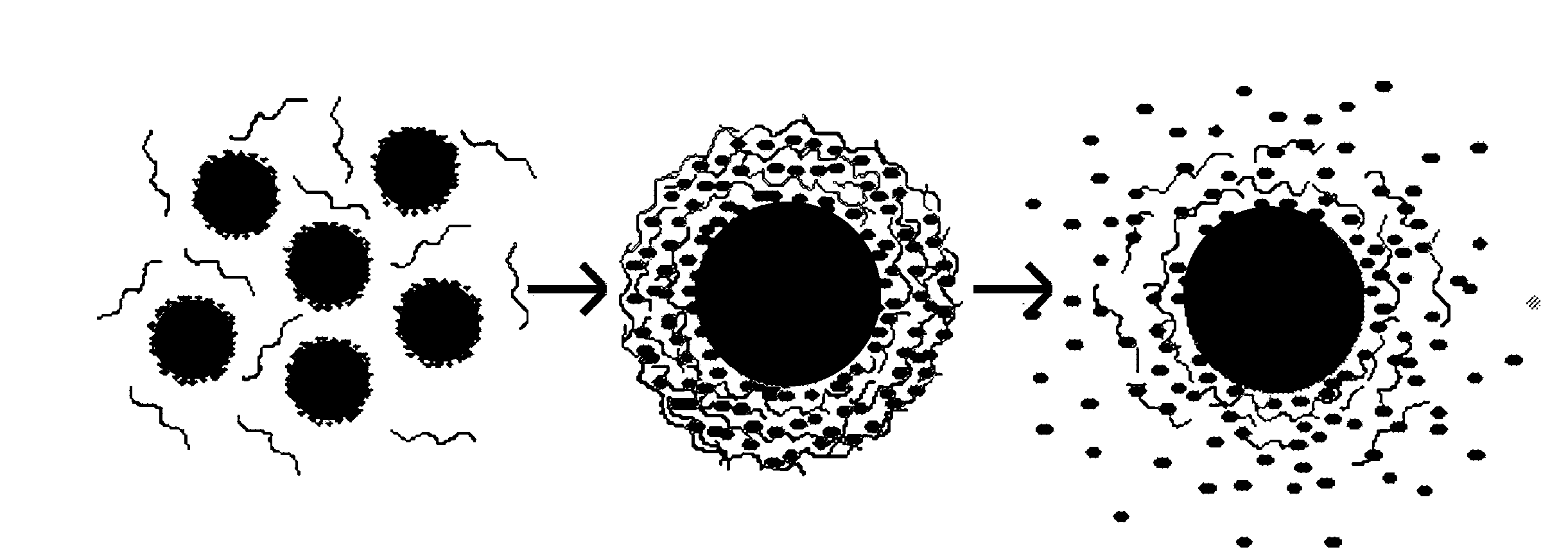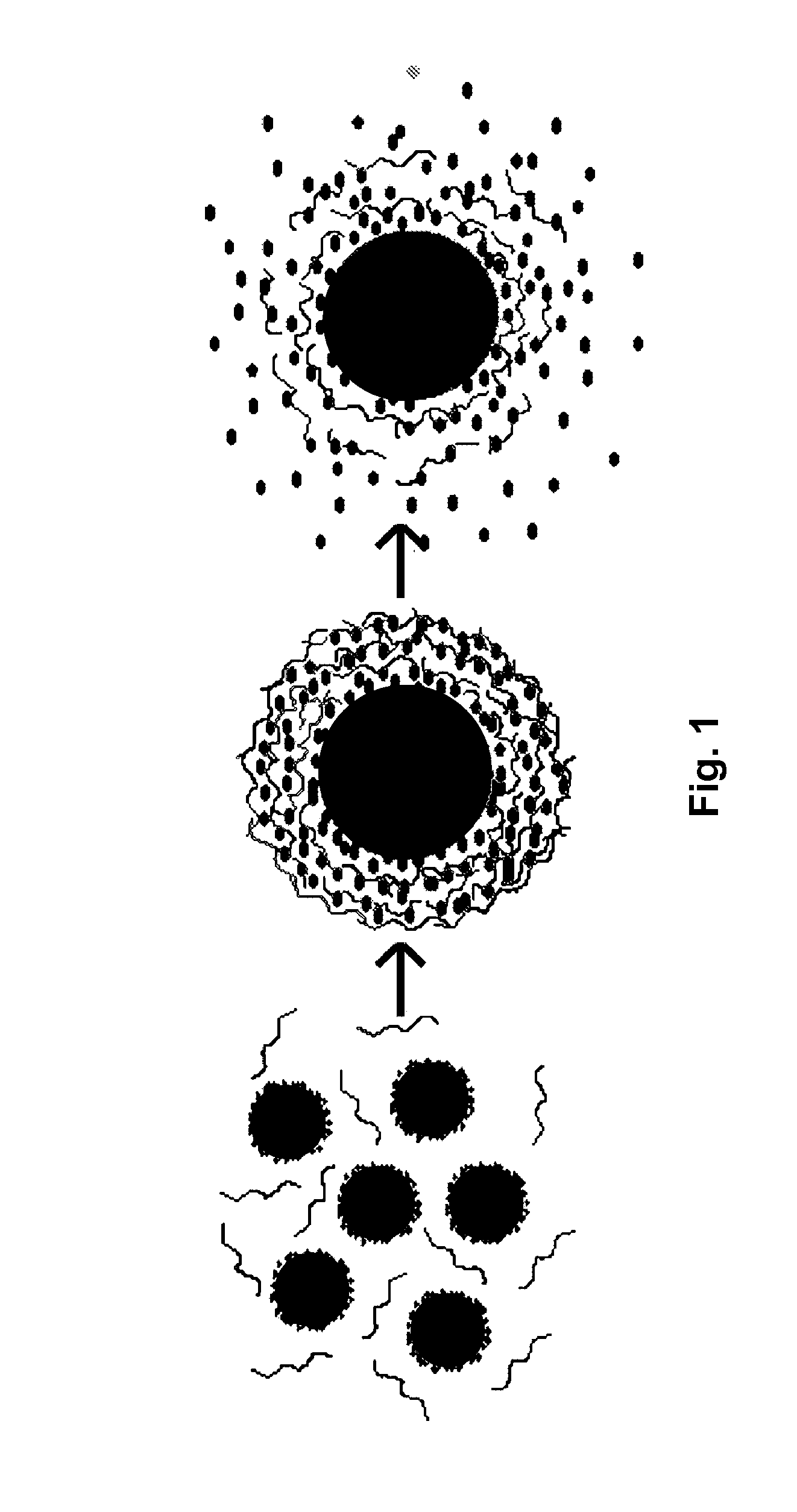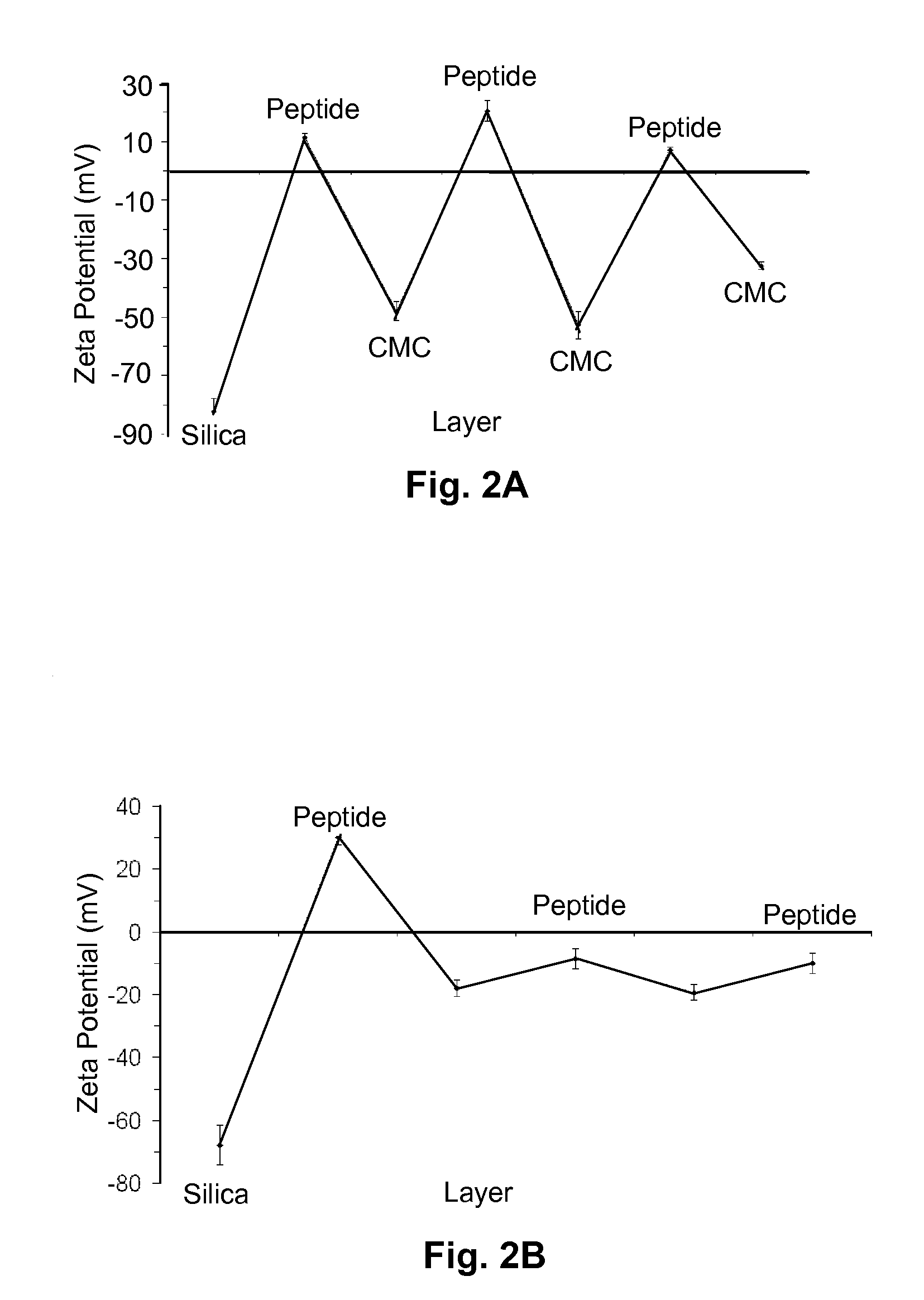Layered Nanoparticles for Sustained Release of Small Molecules
a nanoparticle and nanoparticle technology, applied in the direction of capsule delivery, microcapsules, peptide/protein ingredients, etc., can solve the problems of high toxicity of compoundes with potential medical uses, and achieve the effects of minimal side effects, minimal immune system effect, and high specificity and selectivity
- Summary
- Abstract
- Description
- Claims
- Application Information
AI Technical Summary
Benefits of technology
Problems solved by technology
Method used
Image
Examples
example 1
Materials
[0031]Sodium carboxymethylcellulose (CMC) (MW 90,000) and gelatin from bovine skin, type B (Gelatin B. MW 20,000-25,000) were purchased from Sigma-Aldrich. The anti-cancer lytic polypeptide Phor21-βCG(ala) (MW 4,010) was obtained in lyophilized form from the National Cancer Institute (Bethesda, Md.). Silica nanoparticles (diameter 450 nm+30 nm) were purchased from Polysciences Inc. in 5.7% aqueous dispersion. The release medium used in these experiments was 0.9% sodium chloride, injectable USP solution (B. Braun Medical Inc., pH 5.6). The human breast cancer cell line MDA-MB-435S was obtained from the American Type Culture Collection (Rockville, Md.). Thiazolyl Blue was obtained from Sigma-Aldrich. All materials were used as received, unless otherwise noted. Although 450 nm diameter silica cores were used in the prototypes, larger or smaller particles may also be used without otherwise changing the techniques described, except that in general a smaller diameter core will re...
example 2
Preparation of Silica-Polyanion-Peptide Core-Shell Nanoparticles
[0032]Polyelectrolyte multilayers were deposited on silica nanoparticles using procedures generally following those of M. McShane et al., “Layer-by-Layer Electrostatic Self-Assembly, pp. 1-20 in J. Schwartz (ed.), Dekker Encyclopedia of Nanoscience and Nanotechnology (2004); and Y. Lvov et al., “Assembly of Multicomponent Protein Films by Means of Electrostatic Layer-by-Layer Adsorption,”J. Am. Chem. Soc., vol. 117, pp. 6117-6123 (1995). The CMC or gelatin B was negatively charged, and the Phor21-βCG(ala) in deionized (DI) water was positively charged. Typically, CMC or gelatin B (0.5 mL of a 2 mg / mL solution in 0.2 M aqueous NaCl) and Phor21-βCG(ala) (0.5 mL of a 1 mg / mL solution in 0.2 M aqueous NaCl) were added alternately into 1.5 mL silica particle suspensions (20 mg silica total mass). The adsorption of each polyelectrolyte or peptide layer was complete within 30 min at 4° C. Between depositions of successive laye...
example 3
Characterization of Silica-Polyanion-Peptide Core-Shell Nanoparticles by QCM and by Surface Charge
[0033]The assembly of layers onto the silica nanocores was confirmed by monitoring Quartz Crystal Microbalance resonance frequency changes (QCM, USI-Systems, Japan), and also by observing changes in the electrophoretic potential (4-potential) after the deposition of each layer using a Zeta Potential Analyzer (Brookhaven Instruments Corporation).
PUM
| Property | Measurement | Unit |
|---|---|---|
| Time | aaaaa | aaaaa |
| Time | aaaaa | aaaaa |
| Time | aaaaa | aaaaa |
Abstract
Description
Claims
Application Information
 Login to View More
Login to View More - R&D
- Intellectual Property
- Life Sciences
- Materials
- Tech Scout
- Unparalleled Data Quality
- Higher Quality Content
- 60% Fewer Hallucinations
Browse by: Latest US Patents, China's latest patents, Technical Efficacy Thesaurus, Application Domain, Technology Topic, Popular Technical Reports.
© 2025 PatSnap. All rights reserved.Legal|Privacy policy|Modern Slavery Act Transparency Statement|Sitemap|About US| Contact US: help@patsnap.com



